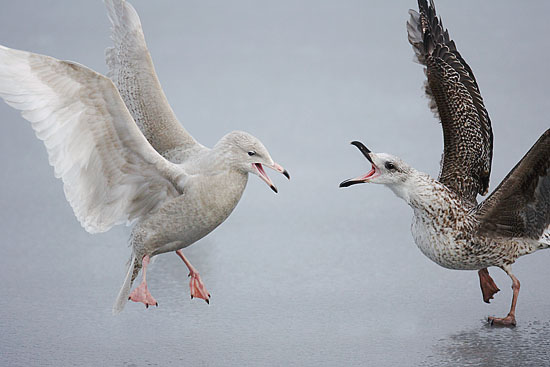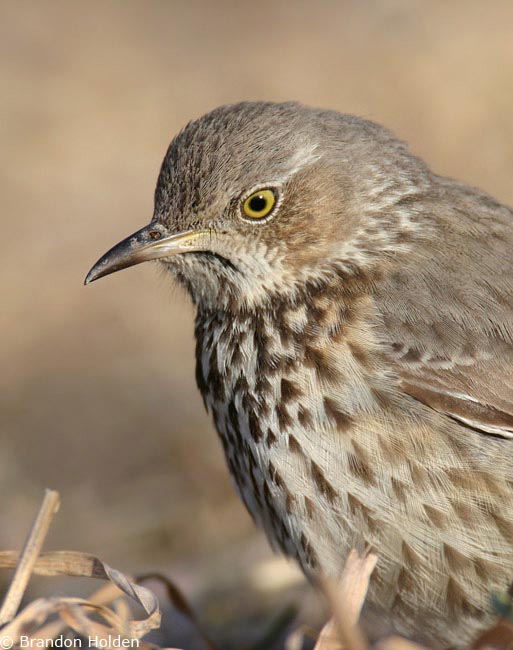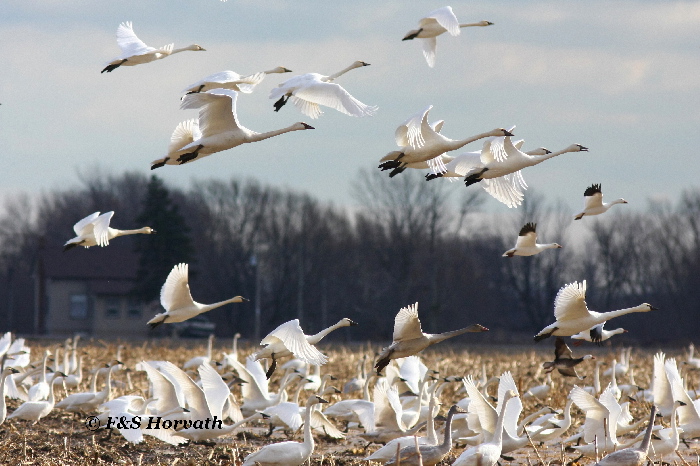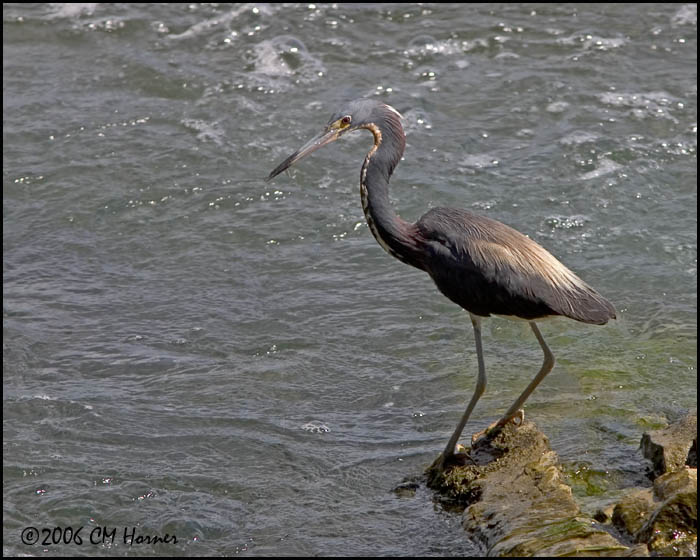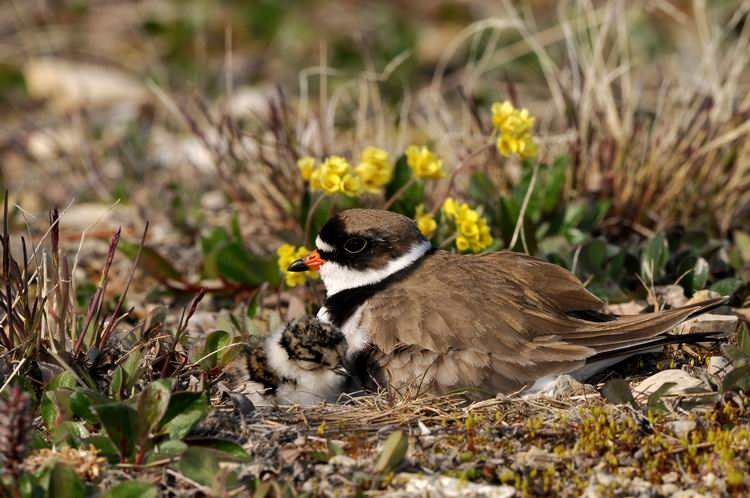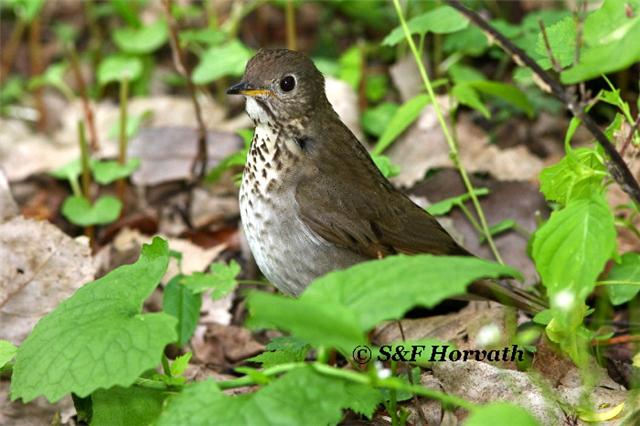January 3 2026 (Saturday) Toronto Lakeshore Winter Trip
Leader: Mark Peck, Peter Sproule.
3 January 2026 - It was a cold and blustery day at Tommy Thompson Park/Leslie Street Spit. Peter Sproule and I were a little concerned that many of our registered OFO members would not show up but by 9:05 we had 19 intrepid birders ready to face the elements. During our introduction it was clear that the focus of todays walk was centered on the juvenile American Goshawk and the King Eider located on Peninsula B, approximately 3 kms south of the parking lot. Everyone agreed we should face the icy road, wind and cold and go for it. The Spit can be challenging in the winter. Most of the birds are closer to the tip than the parking lot and the walk back always feels twice as far as the walk out. The group was not to be deterred. It was going to be slow going. The marina was mostly ice but we picked up a few waterfowl species. Cell 2 was also frozen with not a waterfowl to be seen. Songbirds were scarce but we had a pair of ravens, a couple of robins, some chickadees and a few American Tree Sparrows on the way out. Walking out to Pen B was icy but we persevered and soon saw several other birders photographing a small flock of Horned Larks foraging in the short grass near the cormorant colony. One hundred metres from the larks, right at the tip of the peninsula was a small flock of Long-tailed Ducks with a beautiful King Eider swimming among them. We spent about 10 minutes watching the eider, and long-tailed ducks and then everyone agreed it was a good time to head back. On the way back we tried for the Horned Grebe that several other birders told us about, but it was not to be. We arrived back to the parking lot at 12:30, took a quick side trip to Unwin Bridge for an American Coot and a few hundred Redheads and we were finished for the day. We ended with only 25 species but, given the weather, not too bad! My thanks to all of the members who stuck with us and made it a most enjoyable day.
Mark Peck
January 1 2026 (Thursday) Peterborough County
Leader: Cathy Douglas, Dave Milsom.
The annual OFO New Year's Day outing was enjoyed by all 9 participants and the 2 leaders despite the -20 c starting temperature. But it was a beautiful sunny winter's day and all were suitably dressed, some to the point that they were unrecognizable ! Only 26 species seen but some good ones including 90 Bohemian waxwings, 75 Evening Grosbeaks, 7 Bald Eagles and a single Pine Siskin. We followed the mostly frozen river from Trent University up to Lakefield before driving as far north as Nephton Ridge near Petroglyphs Provincial park. After a nice late Tims lunch in Lakefield, we spent a rather unproductive rest of the afternoon near Peterborough Airport, finishing the day at 3.30 pm.
Dave Milsom
December 20 2025 (Saturday) Toronto Lakeshore
Leader: Raspberry Yow Fairs.
9 participants attended for a rather windy walk around Colonel Sam Smith Park. One of the first birds that we saw was a Snowy Owl in the marina, fluffed up against the cold. We then went on towards the beach south of the water treatment plant, where there was a Horned Grebe, as well as Buffleheads, Greater Scaup, and some Common Goldeneye. While walking up towards Whimbrel Point, we saw Northern Cardinals, as well as Red-breasted Mergansers and Long-tailed Ducks braving the rough waves inside the construction zone. The main highlight, and a focal point of the trip, was the Snowy Owl. We walked around the marina from West Point, hoping to see its face again after the first sighting. However, it must have known, as it turned its head along with us. We then walked along the second beach towards the wetland, spotting a large raft of scaup and some American Tree Sparrows. At the viewing platform, there were a surprising number of American Robins tossing leaf litter around, and a cooperative Downy Woodpecker feeding in staghorn sumac. We were hoping for a Long-eared Owl, but alas, despite checking the conifers, there were none. The total at the end of the trip was 29 species.
December 13 2025 (Saturday) Toronto Lakeshore
Leader: Peter Sproule.
Seven intrepid souls made the walk starting at the Powerhouse in Colonel Sam Smith Park. The winds blowing off the lake made the temperature feel colder at times, but sometimes you see the best species. We started at the west end of the park, near the marina entrance where various waterfowl species tend to congregate - Mallards, Gadwall, Long-tailed Duck, Bufflehead, Common Goldeneye were all viewed from our vantage point, and American Herring Gull and Ring-billed Gulls were resting on the ice for nice size comparisons. Our attention was drawn to a large buteo perched in a tree across the water - a Red-tailed Hawk, followed by a flying Norther Harrier, and then a female Rough-legged Hawk joined the aerial show - the Rough-legged was a lifer for a few in the group. The group continued to circle the marina and headed towards Whimbrel Point; American Black Duck, Greater Scaup, and Red-breasted Mergansers were observed on the water, with several Common Mergansers flying overhead. No Snow Buntings were observed. The walk continued inland, where several passerine species were observed along with one very special observation - a Long-eared Owl was briefly observed and was another life bird for some on this part of the walk. American Tree Sparrows, a Brown Creeper, and some White-breasted Nuthatches were the passerines of note before the first phase of the walk concluded.
The second phase reconvened at Humber Bay East Park and Humber Bay West, another good spot for winter ducks along the lakeshore. Hooded Mergansers (1 drake, 3 hens) were the main attraction in the east half attraction. Humber Bay West provided good views of Redhead and 2 Horned Grebes in winter plumage, and a raft of approximately 300 Greater Scaup. The bonus here - a Northern Shrike viewed from the Humber West parking lot, at the conclusion of the trip.
November 16 2025 (Sunday) Presqu'ile
Leader: Jake Nafziger, Julie Ann Prentice.
Sunday November 16th - Presqu'ile Provinical Park
Leaders: Jake Nafziger & JulieAnn Prentice
A group of 13 birders braved the blustery weather to search for waterfowl and shorebirds at Presqu'ile Provincial Park, tallying 42 species throughout the day. We met at the park store at 8am and started with a loop out to Owen Point. From the point we spotted several species of waterfowl bobbing amongst the whitecaps including Long-tailed Ducks, White-winged Scoters, Common Goldeneye, and Buffleheads. A Cooper's Hawk was seen flying off High Bluff Island towards the mainland, and a Great Black-backed Gull loafing on the shoreline with some American Herring Gulls. The group split up and 6 of us ventured through the water crossing to explore Gull Island. No Purple Sandpipers had arrived yet, but we were treated to fantastic views of Snow Buntings and 2 Black-bellied Plovers. Cool non-bird find was a large Burbot that had washed up on a shoal between Owen Point and Gull Island, an interesting deep-water fish species native to Lake Ontario.
After making it back to the mainland, our group reconvened and decided to check out a couple other spots in the park. First was the lighthouse, where we found shelter from the wind and had nice views of Redheads and a Horned Grebe off the point. Two immature Bald Eagles flew off the point and continued east over the lake, flushing large flocks of Scaup and Redhead in the distance. Just before we moved on, a Carolina Wren was heard singing loudly in the parking lot.
After a brief stop at the calf pasture, the remaining participants continued on to the last spot of the day in Gosport. Here we got nice scope views of several dabbling ducks including Green-winged Teals, Gadwalls, and a Northern Pintail. We also had two Bonaparte's Gulls foraging on the mudflats, and the last bird of the day was a Pied-billed Grebe. Despite the difficult birding conditions, spirits remained high throughout the trip and the group had a great time!
November 9 2025 (Sunday) Colonel Sam Smith Park
Leader: Peter Sproule, Julia Zarankin.
OFO Bird Outing November 9, 2025
Colonel Samuel Smith Park
Four intrepid birders joined us for what turned out to be a freezing winter ramble through Colonel Samuel Smith Park. Wind, rain and snow didn?t deter us from marveling at the waterfowl by the lake and marina, where we saw Red-necked and Horned Grebes, Gadwall, Common Goldeneye, Long-tailed Ducks, Mute Swans, Bufflehead and a lone Common Loon giving great looks and an opportunity to discuss winter plumage. We were treated to rafts of Red-breasted Mergansers with their spectacular hairdos as well as a half-dozen White-winged Scoters. A highly photogenic Cooper?s Hawk sitting on a fence regaled us with excellent views. Upon retreating from the blustery wind, we headed toward the viewing platform and, as predicted, an immature Black-crowned Night Heron met us just as we arrived. A Belted Kingfisher?s unmistakable rattle provided great musical accompaniment as we marveled at the night heron?s camouflage abilities, and just as we were about to leave, a Hermit Thrush appeared and flashed its gorgeous, rufous tail. On our way back to the cars we found a host of sparrows, including Fox, White-throated, and American Tree (a true sign of winter?as if we hadn?t noticed already), along with several Dark-eyed Juncos, Northern Cardinals, American Goldfinch, a Golden-crowned Kinglet and Black-capped Chickadees. Weather conditions notwithstanding, we had a wonderful morning and tallied a very respectable 33 species. Many thanks to the eagle-eyed birders who spotted excellent birds, asked great questions and provided good cheer.
Julia Zarankin & Peter Sproule

